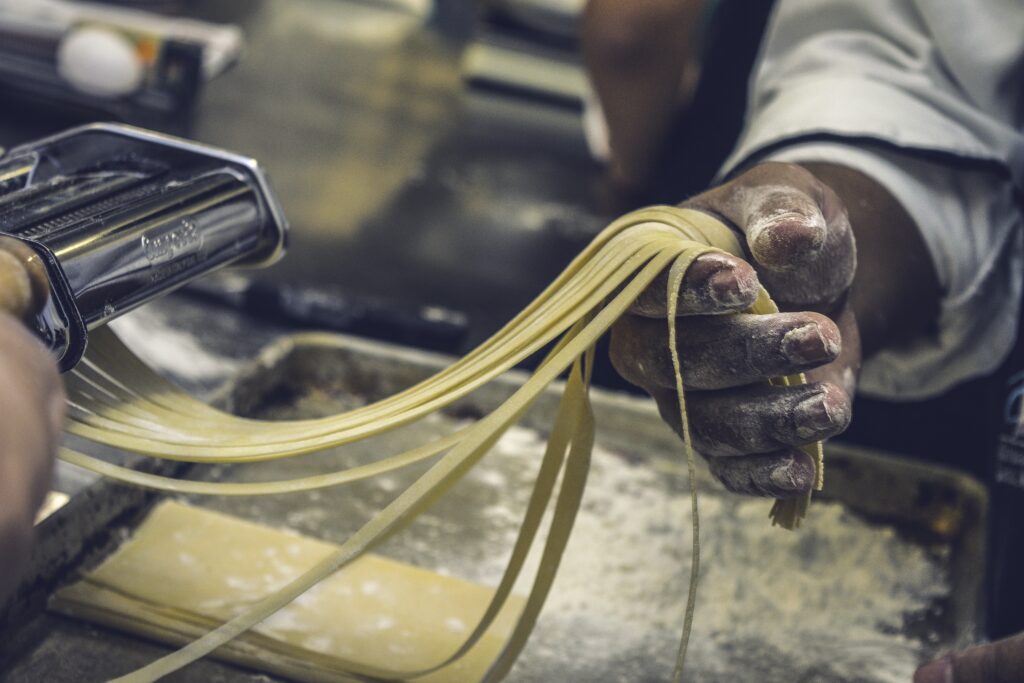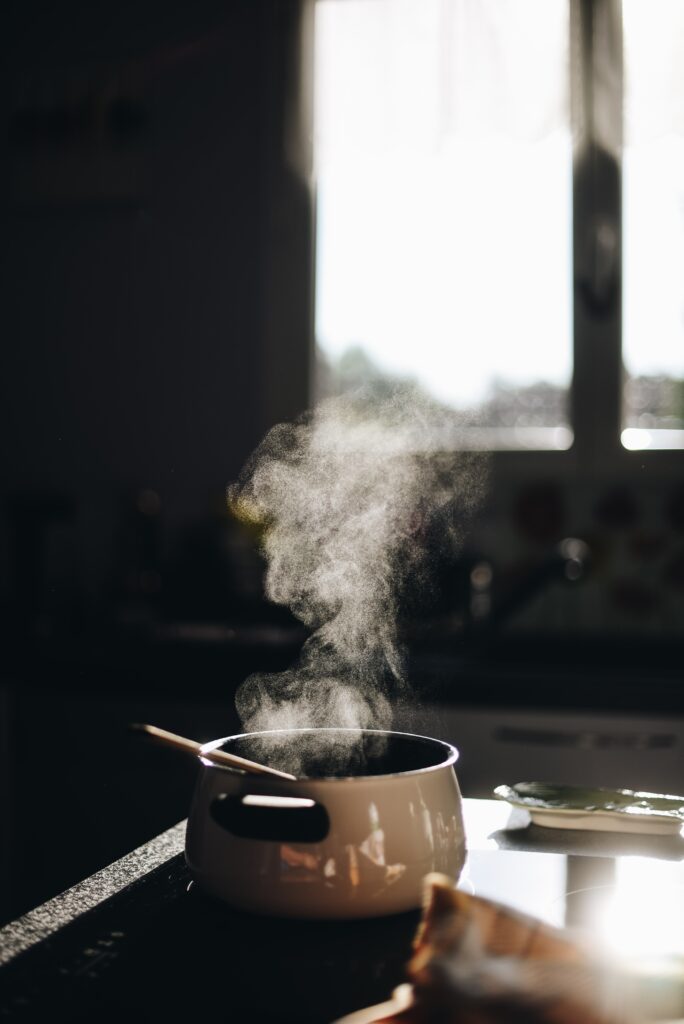
Are you tired of relying on recipes every time you step into the kitchen? Well, you’re in luck! In this article, you’ll discover the joy and freedom of cooking without recipes. Say goodbye to the constraints of step-by-step instructions and hello to your own culinary creativity. Whether you’re a seasoned chef or a beginner in the kitchen, this approach will unlock a whole new world of flavors and experimentation. Get ready to embrace your inner chef and make every meal a unique and delicious masterpiece!

Why Cook Without Recipes?
Cooking without recipes is a liberating and exciting way to approach the culinary world. It allows you to tap into your creativity, develop your culinary skills, and create meals tailored to your taste preferences. By relying on your instincts and intuition, you are free to experiment with flavors, techniques, and ingredients, leading to truly unique and delicious dishes. Whether you are a seasoned chef or a passionate home cook, cooking without recipes can take your cooking to the next level and bring a sense of fun and adventure to your kitchen.
Benefits of Cooking Without Recipes
Enhances Creativity
When you cook without recipes, you are no longer confined to following strict instructions. Instead, you are encouraged to think outside the box and experiment with different ingredients and combinations. This promotes creativity in the kitchen and allows you to express your own unique culinary voice. You can let your imagination run wild and come up with bold and unexpected flavor combinations that can truly wow your taste buds and those of your loved ones.
Develops Culinary Skills
Cooking without recipes is a great way to sharpen your culinary skills. As you experiment with different ingredients and techniques, you gain a deeper understanding of how flavors work together and how different cooking methods affect the texture and taste of food. This hands-on approach to cooking allows you to build your knowledge and confidence in the kitchen, making you a more skilled and versatile cook.
Encourages Flexibility
Following a recipe can be rigid and limit your ability to adapt. Cooking without recipes encourages flexibility and adaptability in the kitchen. If you don’t have a specific ingredient on hand, you can easily substitute it with something else. If you want to add a personal touch or adjust the recipe to suit your taste, you have the freedom to do so. This flexibility allows you to create meals that truly reflect your preferences and dietary needs, while also making the most of what you have in your pantry.
Promotes Intuitive Cooking
Cooking without recipes teaches you to trust your instincts and become more in tune with your senses. By relying on your taste, smell, and touch, you can gauge the doneness of a dish or adjust the seasoning to your liking. This promotes intuitive cooking, where you learn to trust your judgment and create dishes that are perfectly balanced and flavorful. Intuitive cooking can also help you become more efficient in the kitchen, as you develop a sense of timing and become more comfortable multitasking.
Tips for Cooking Without Recipes
Start with Familiar Ingredients
When cooking without recipes, it can be helpful to start with familiar ingredients. Choose ingredients that you are comfortable working with and that you know pair well together. This will give you a solid foundation to build upon and help you feel more confident in your cooking. As you become more comfortable, you can start incorporating new and exciting ingredients to broaden your culinary horizons.
Understand Basic Flavor Profiles
Having a grasp of basic flavor profiles can greatly enhance your ability to cook without recipes. Familiarize yourself with the different tastes – sweet, salty, sour, bitter, and umami – and learn how to balance them in a dish. Understanding flavor profiles will allow you to instinctively know what ingredients will complement each other and how to adjust the seasoning to achieve the desired taste.
Experiment with Seasonings and Spices
Seasonings and spices are the secret weapons of flavorful cooking. When cooking without recipes, don’t be afraid to experiment with different seasonings and spices. Start with small amounts, taste as you go, and adjust accordingly. This will help you develop a sense of how each seasoning or spice can elevate the flavor of a dish and expand your culinary repertoire.
Adjust Cooking Techniques
Just as important as ingredients and seasonings are the cooking techniques you employ. Experiment with different methods such as sautéing, roasting, grilling, baking, simmering, and frying. Each technique brings its own unique flavors and textures to the dish. By becoming comfortable with various cooking techniques, you can choose the one that best suits the ingredients and achieve the desired results.
Use Your Senses
When cooking without recipes, your senses become your most valuable tools. Taste, smell, and touch the ingredients and dishes as you cook. Pay attention to their colors, textures, and aromas. Use your senses to guide you and make adjustments to your cooking as needed. The more you rely on your senses, the more confident and intuitive you will become in the kitchen.
Stocking Your Pantry and Fridge
Having a well-stocked pantry and fridge is crucial for cooking without recipes. By having a variety of staple ingredients on hand, you’ll always be prepared to whip up a delicious meal. Basic pantry staples include spices, herbs, oils, vinegars, stocks, and grains. In the fridge, make sure to have a selection of fresh produce, dairy products, proteins, and condiments. This way, you can easily access a range of ingredients to inspire your culinary creations.

Essential Cooking Techniques
Mastering fundamental cooking techniques is key to successfully cooking without recipes. Here are some essential techniques to learn:
Sautéing
Sautéing involves cooking ingredients quickly in a hot pan with a small amount of fat. This technique allows for the flavors of the ingredients to develop and also creates a delicious caramelized crust. It is perfect for cooking vegetables, meats, and seafood.
Roasting
Roasting involves cooking food in the oven with dry heat. It creates a crispy exterior and a moist and flavorful interior. Roasting is great for meats, vegetables, and even fruits.
Grilling
Grilling is a popular cooking technique that adds a unique smoky flavor to food. It involves cooking food over an open flame or hot coals. Grilling is perfect for meats, vegetables, and even fruits.
Baking
Baking is a method of cooking in an enclosed space, usually an oven. It is ideal for bread, pastries, cakes, and casseroles. Baking allows for even cooking and browning, resulting in delicious and beautifully golden dishes.
Simmering
Simmering involves cooking food slowly in liquid, just below boiling point. This gentle cooking method allows flavors to meld together and results in tender and flavorful dishes. Simmering is often used for soups, stews, sauces, and braises.
Frying
Frying is a technique that involves cooking food in hot oil or fat. It creates a crispy and golden exterior while locking in the moisture inside. Frying is suitable for foods like chicken, fish, vegetables, and even desserts like donuts.
Building Flavors
Building flavors is a fundamental aspect of cooking without recipes. By layering different ingredients and seasonings, you can create depth and complexity in your dishes. Start by building a flavor base with aromatics such as onions, garlic, and herbs. From there, you can add other ingredients like spices, sauces, and condiments to enhance the taste. Taste as you go and adjust the seasonings to achieve the desired flavor profile.

Understanding the Role of Texture
Texture is equally important as taste when cooking without recipes. The texture of a dish can greatly impact the overall dining experience. Experiment with different cooking techniques to achieve the desired texture. For example, grilling can provide a charred and smoky texture, while simmering can result in tender and melt-in-your-mouth textures. Consider the texture of each ingredient and how they complement each other to create a harmonious balance.
Cooking Without Recipes: From Starters to Desserts
When it comes to cooking without recipes, the possibilities are endless. Here are some ideas for different meal categories:
Appetizers
Get the party started with creative appetizers such as crostini topped with a variety of spreads, bruschetta with seasonal fresh toppings, or crispy vegetable fritters served with a flavorful dipping sauce. Let your creativity shine by combining different flavor profiles, textures, and cooking techniques.
Salads and Dressings
Create vibrant salads using a mix of fresh greens, vegetables, fruits, nuts, and cheese. Experiment with various dressings made from scratch, using ingredients like olive oil, vinegar, citrus, mustard, and herbs. Add proteins like grilled chicken, seared shrimp, or marinated tofu to make the salad a complete meal.
Main Courses
For the main course, let your imagination run wild. Combine proteins like chicken, steak, seafood, or tofu with an array of vegetables, grains, and sauces. Sauté, roast, grill, or simmer your ingredients to create mouthwatering main courses that will impress your family or guests.
Sides and Accompaniments
Complement your main dishes with flavorful side dishes and accompaniments. Roasted vegetables, herbed rice, creamy mashed potatoes, or homemade bread are all great options. Don’t be afraid to experiment with different ingredients and seasonings to create unique and delicious sides.
Soups and Stews
Warm up with hearty soups and stews that combine various ingredients and flavors. Use a variety of vegetables, proteins, and spices to create a rich and flavorful broth. Let the ingredients simmer together until they develop a depth of flavor that will leave you craving more.
Baking and Desserts
Indulge your sweet tooth by baking without recipes. Experiment with different combinations of flour, sugar, eggs, and flavors to create cakes, cookies, pies, or pastries. Let your creativity shine by adding fruits, nuts, or chocolate to elevate your desserts to another level.
Common Challenges and How to Overcome Them
Seasoning
One common challenge when cooking without recipes is achieving the right balance of seasoning. Start by adding a small amount of seasoning at a time, then taste and adjust as needed. Keep in mind that it’s easier to add more seasoning than to remove it, so go slowly and build flavors gradually.
Proportions
Getting the proportions right when cooking without recipes can be tricky, especially with ingredients that require a specific ratio. Use your judgment and try to keep a balance among the ingredients. Start with smaller amounts and adjust as you go, trusting your intuition and taste buds.
Overcooking or Undercooking
Cooking without recipes means relying on your instincts to determine the cooking time. Pay close attention to the texture and color of the food as it cooks. Taste it regularly to assess the doneness. With practice, you’ll develop a sense of timing and be able to achieve perfectly cooked dishes.
Presentation
Without a recipe to guide you, it can be challenging to present your dish in an appealing way. Take the time to arrange your food neatly on the plate, using contrasting colors and textures. Garnish with fresh herbs, a drizzle of sauce, or a sprinkle of spices for added visual appeal. Remember, presentation is just as important as taste when it comes to creating a memorable dining experience.
Inspiring Resources for Unleashing Creativity
Cooking Shows and YouTube Channels
Watching cooking shows and YouTube channels can be a great source of inspiration when cooking without recipes. Shows like “MasterChef,” “Chopped,” or “Top Chef” can teach you new techniques and creative flavor combinations. YouTube channels like Tasty, Bon Appétit, or Chef John’s Food Wishes offer a wide range of recipe-free cooking inspiration.
Cookbooks for Inspiration
Cookbooks can provide a wealth of inspiration for cooking without recipes. Look for cookbooks that focus on techniques, flavor combinations, or global cuisines. Some popular options include “Salt, Fat, Acid, Heat” by Samin Nosrat, “The Flavor Bible” by Karen Page and Andrew Dornenburg, or “Joy of Cooking” by Irma S. Rombauer.
Online Recipe Aggregators
Online recipe aggregators like Pinterest, Food Network, or Allrecipes can provide a vast range of recipe-free cooking inspiration. Explore different categories, save recipes that catch your eye, and use them as a starting point for your own culinary creations. Remember, these recipes are just a guide – feel free to modify and experiment to make them your own.
Cooking without recipes is all about embracing your creativity, honing your culinary skills, and enjoying the freedom to create unique and delicious meals. With the right mindset, ingredients, and techniques, you can unleash your inner chef and embark on a culinary adventure in your own kitchen. So grab your apron, stock your pantry, and let your imagination guide you to countless mouthwatering dishes. Happy cooking!
